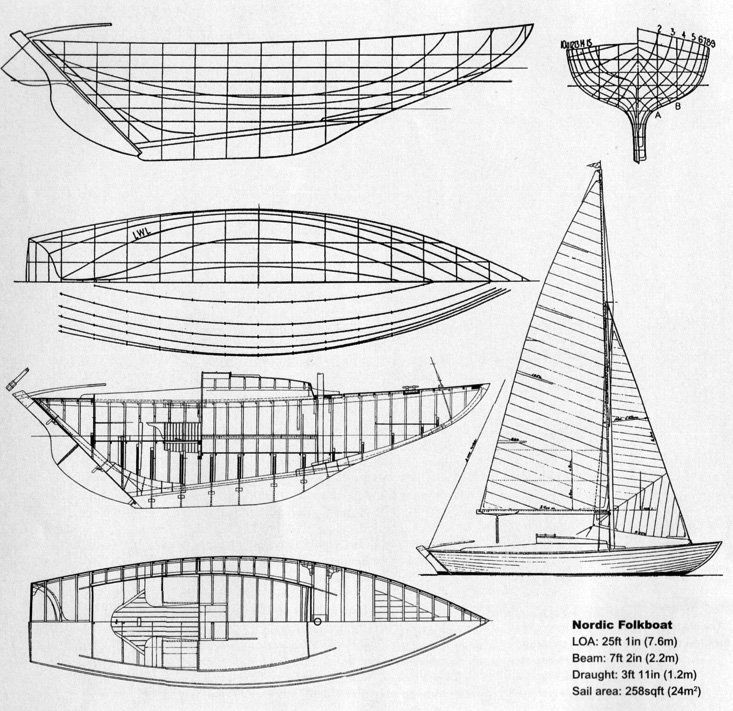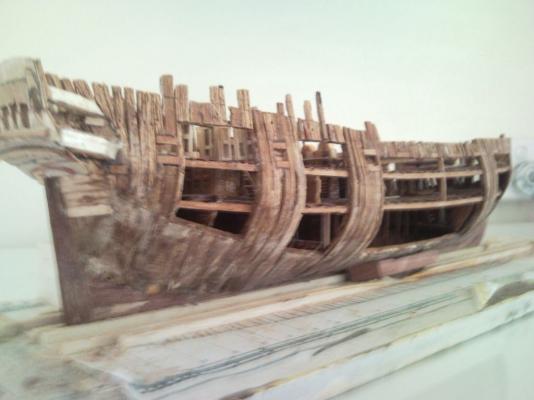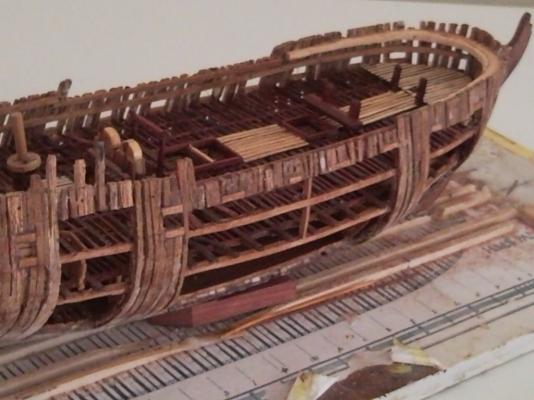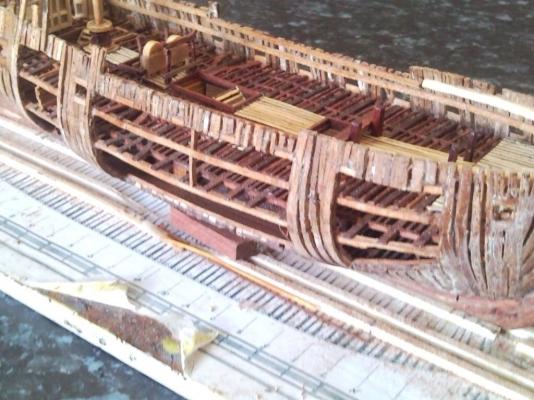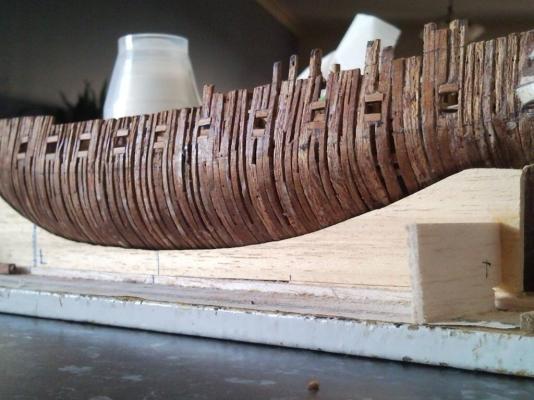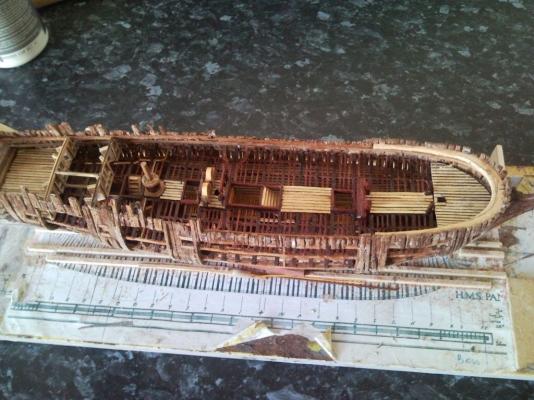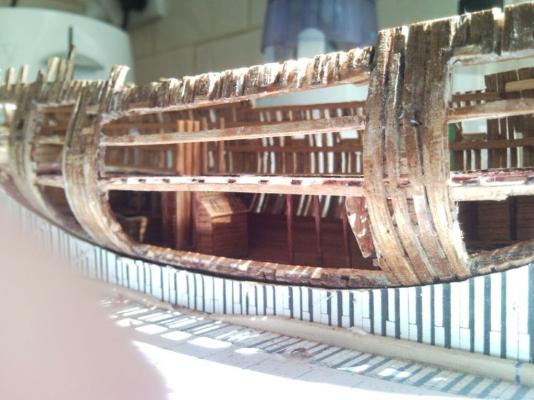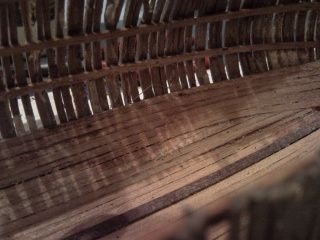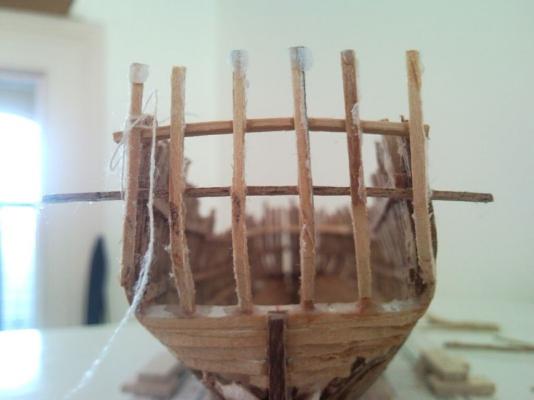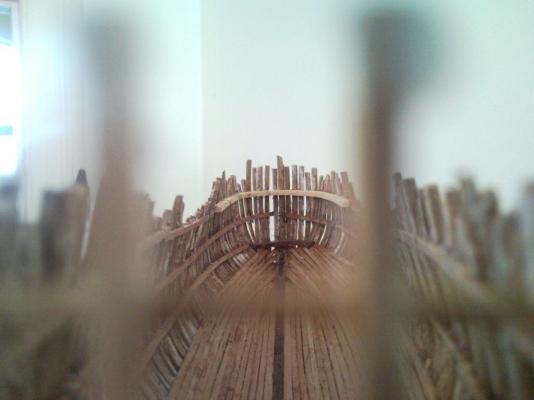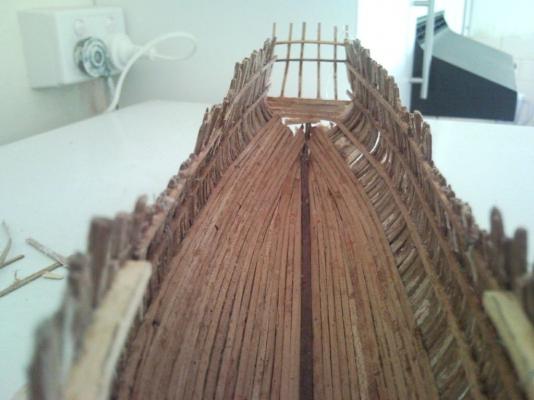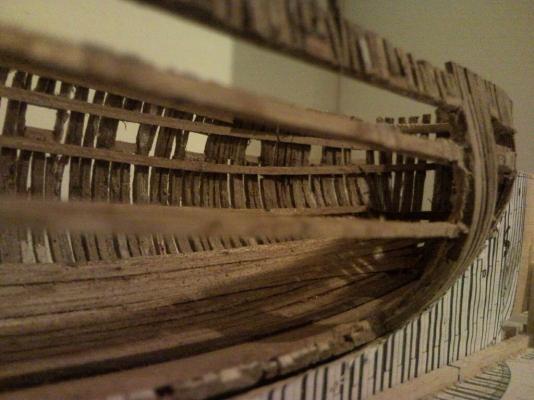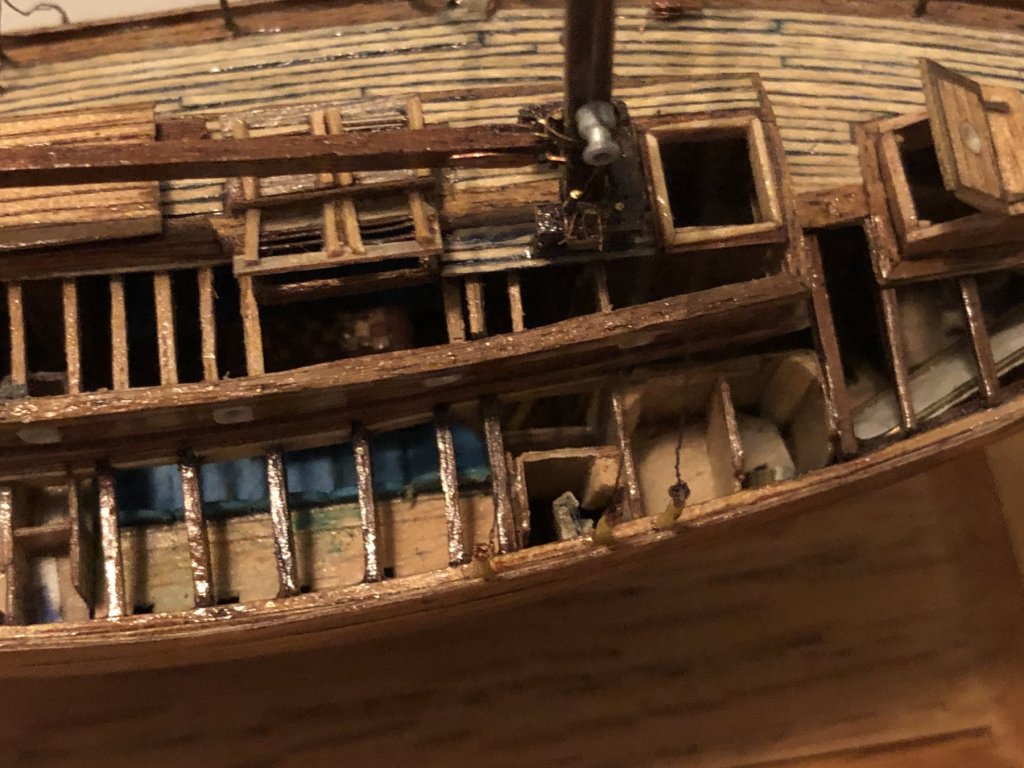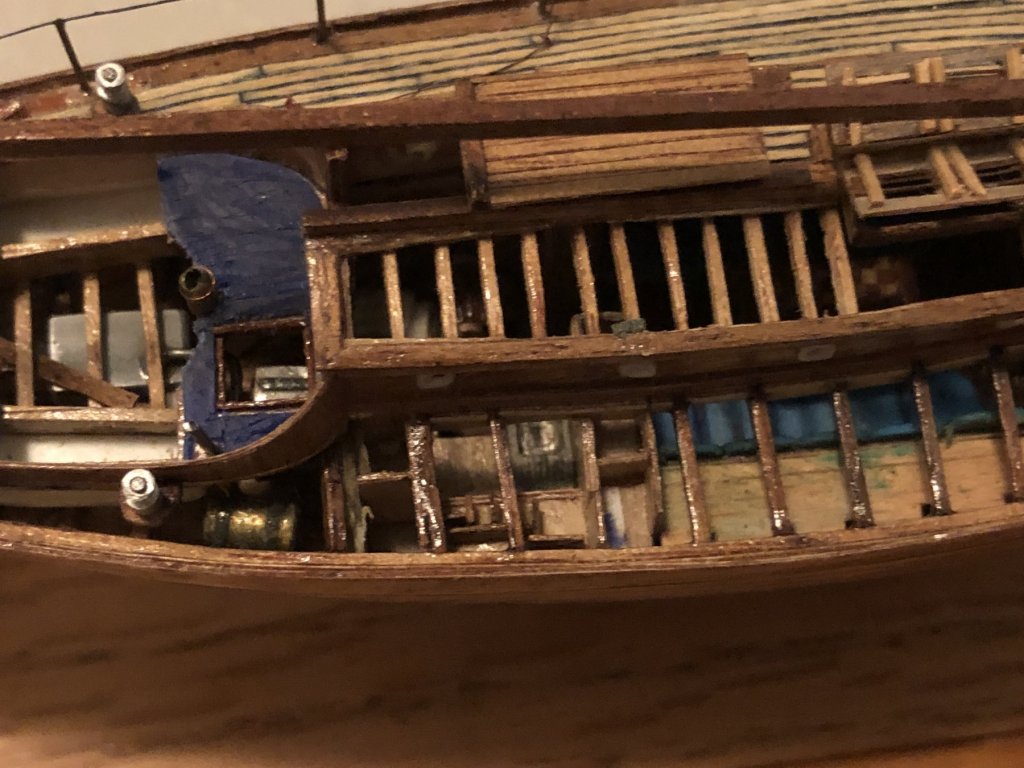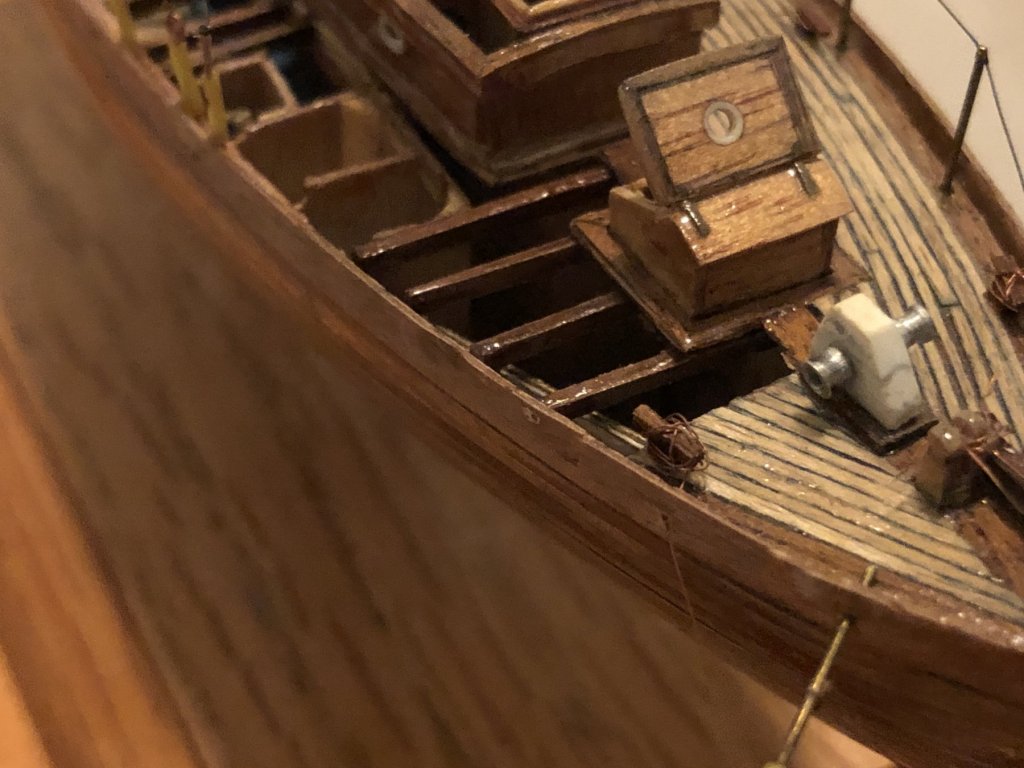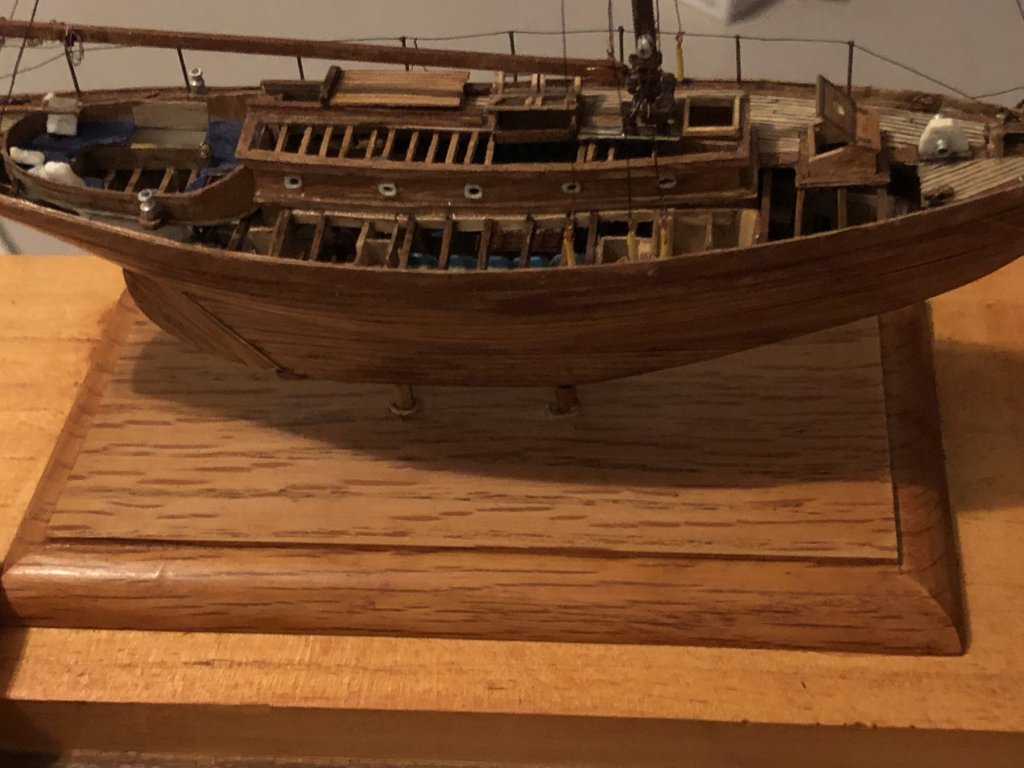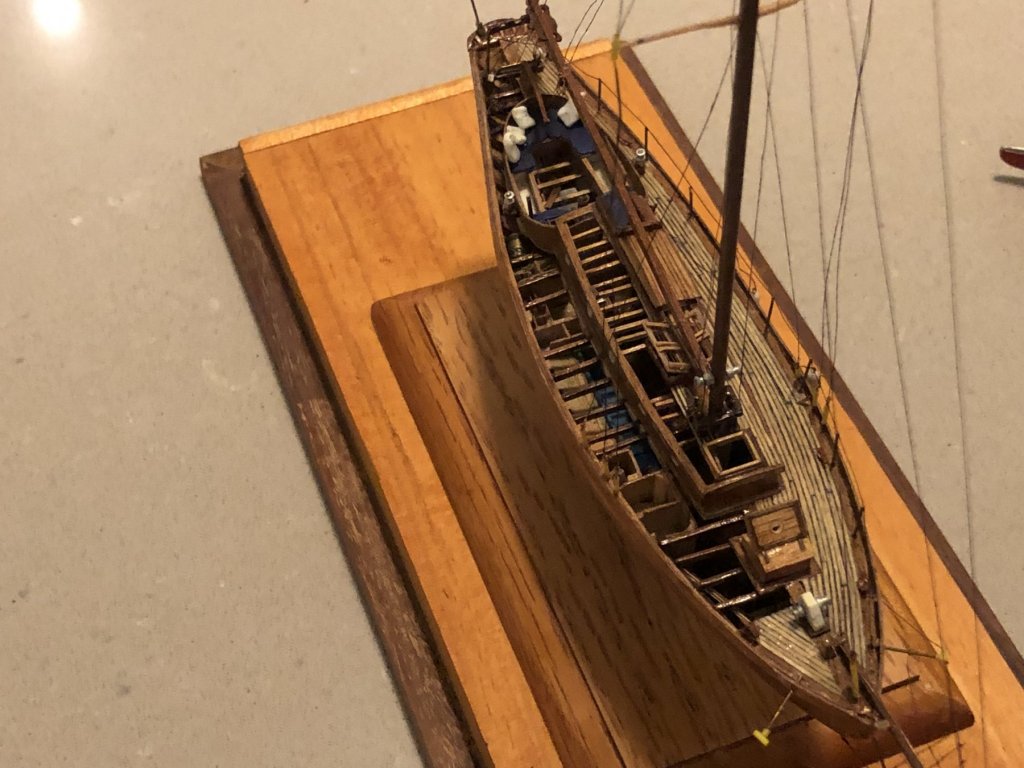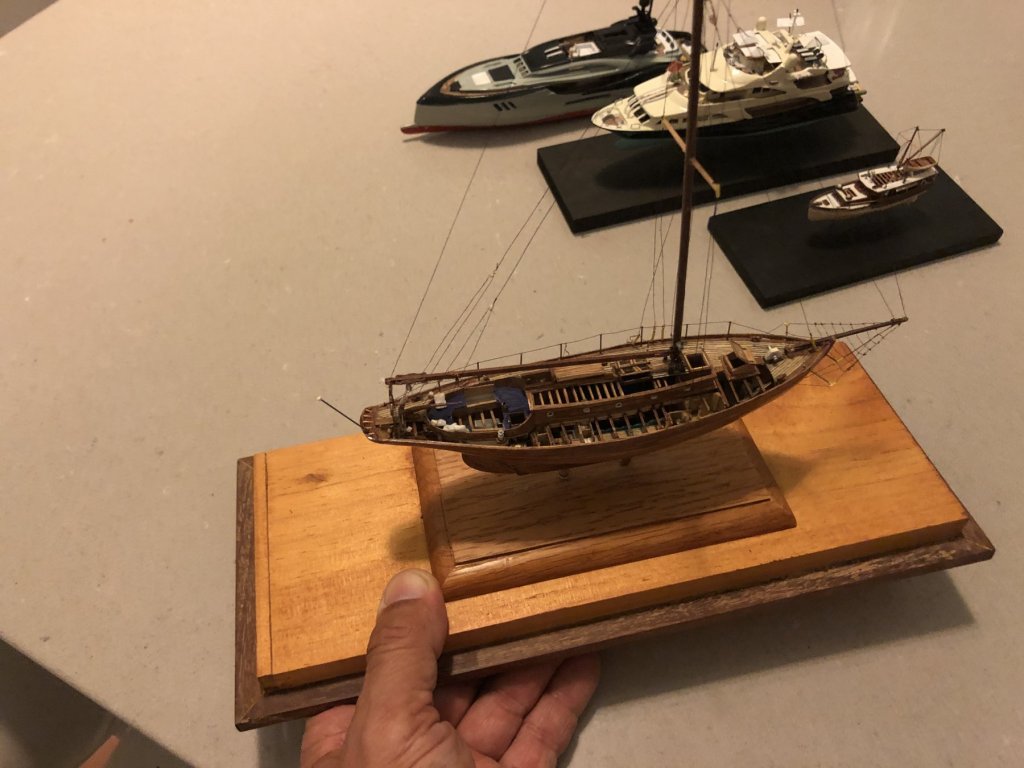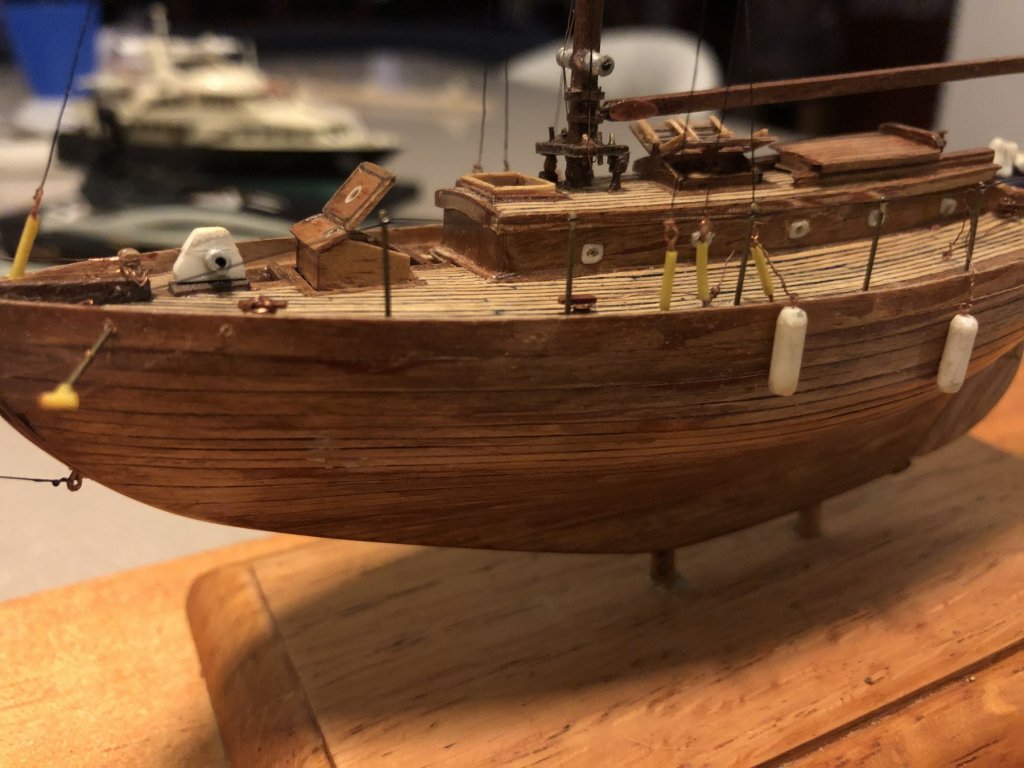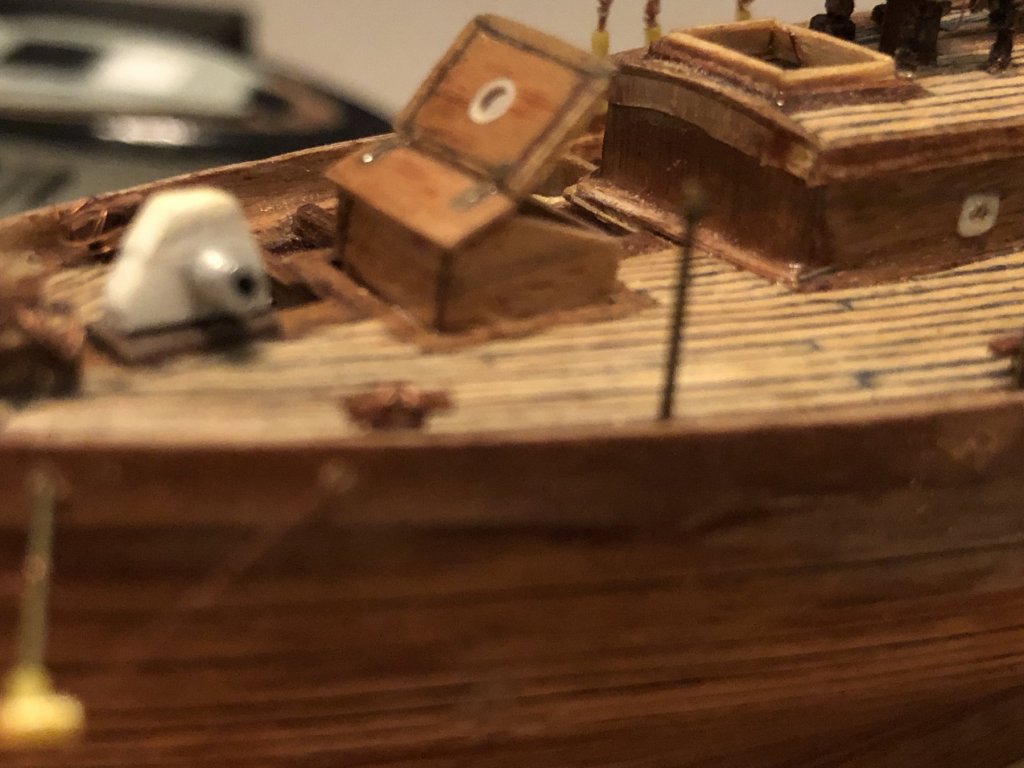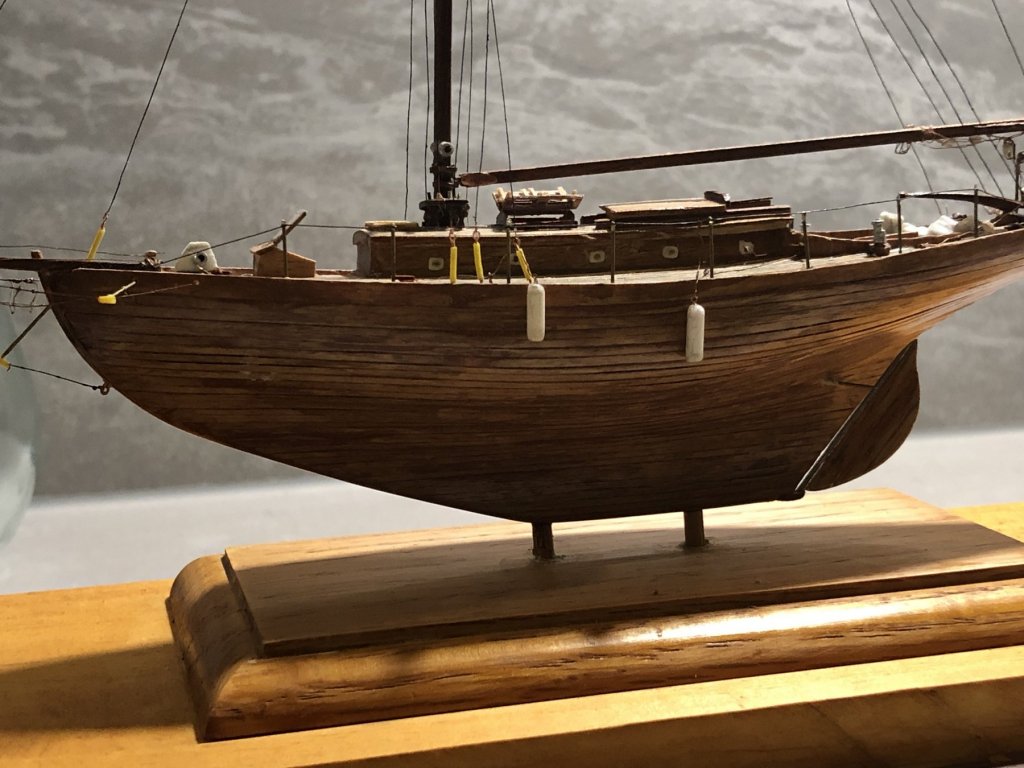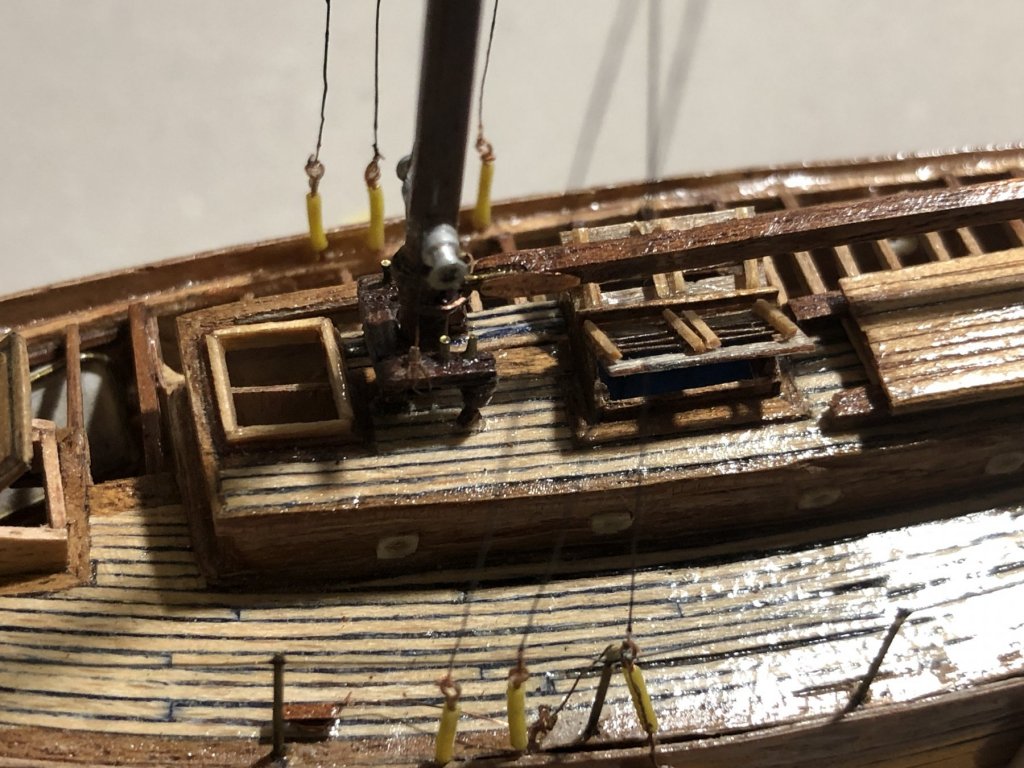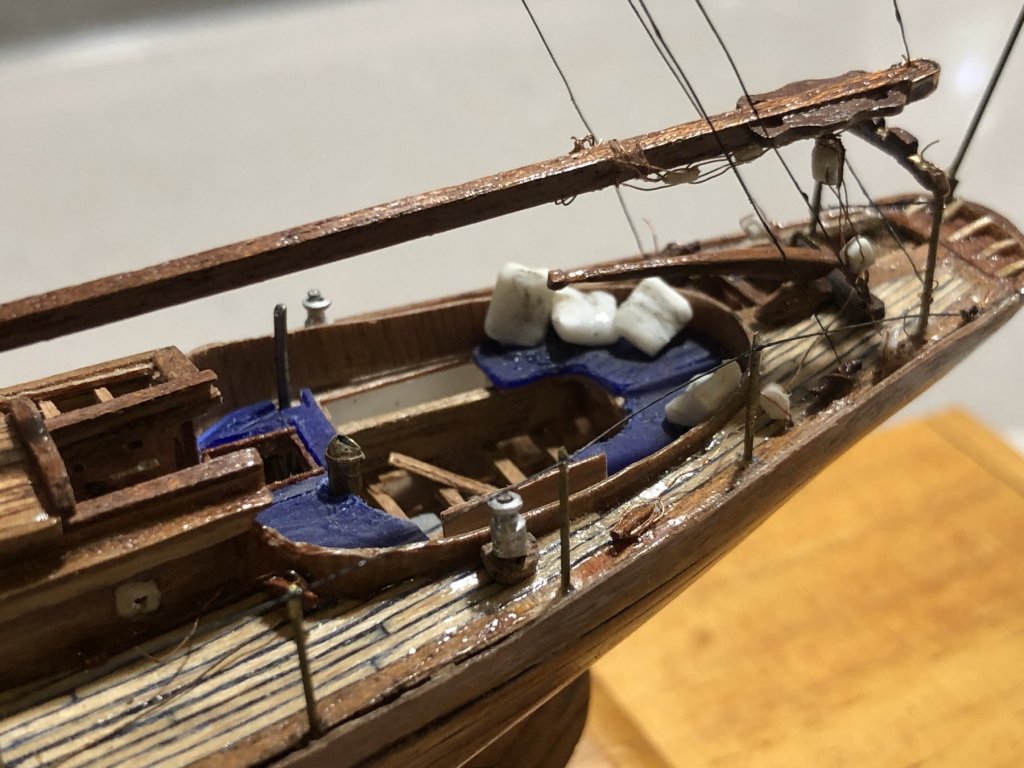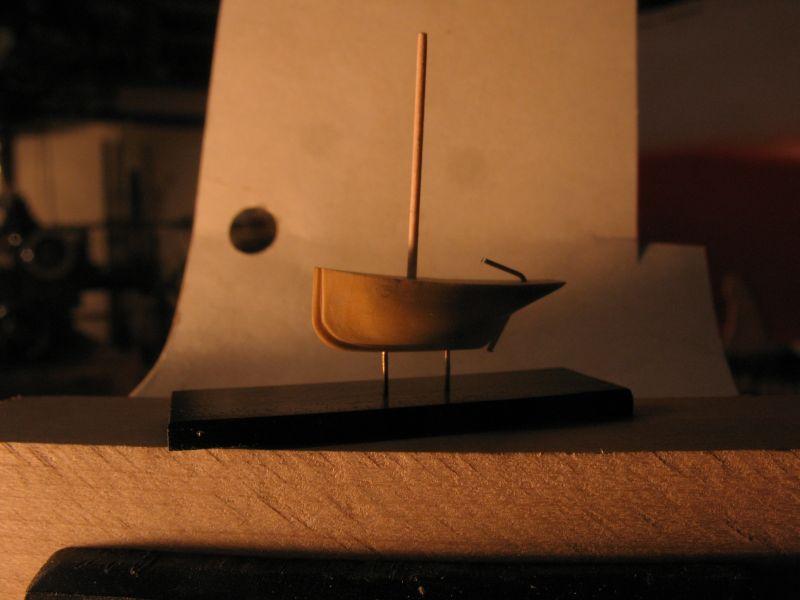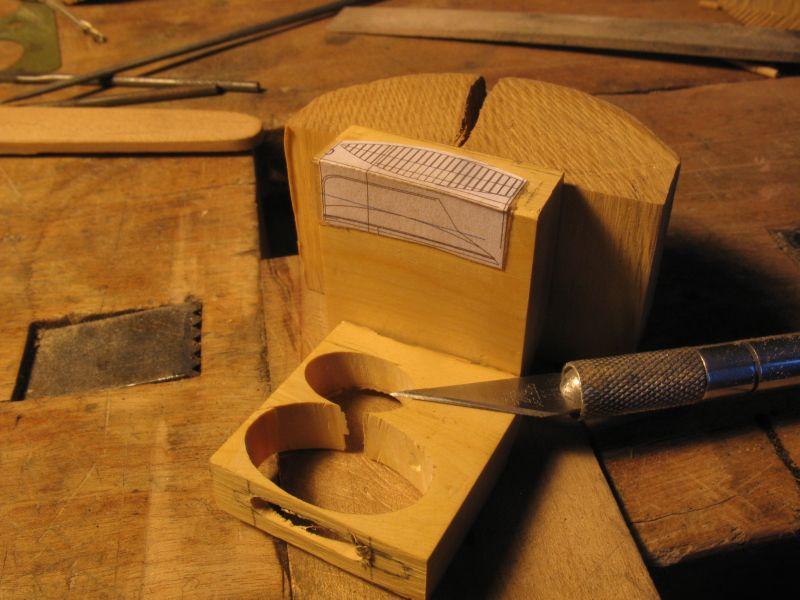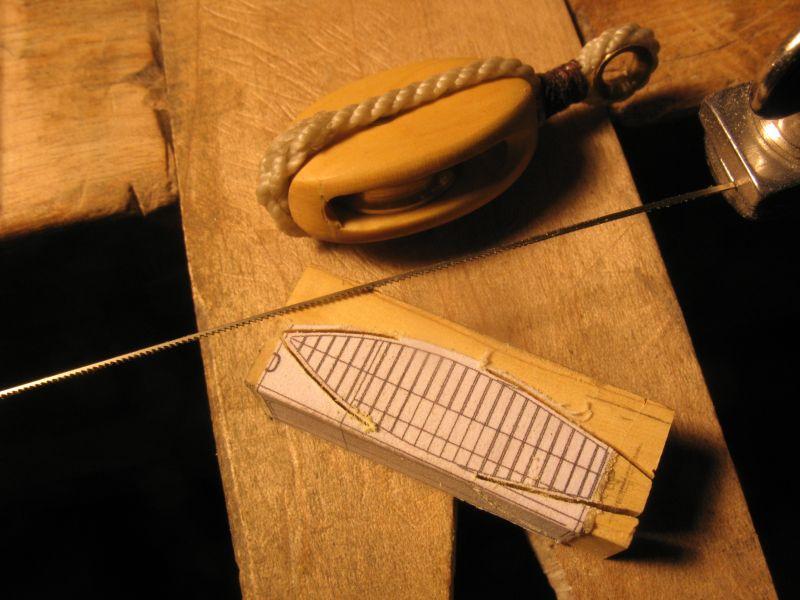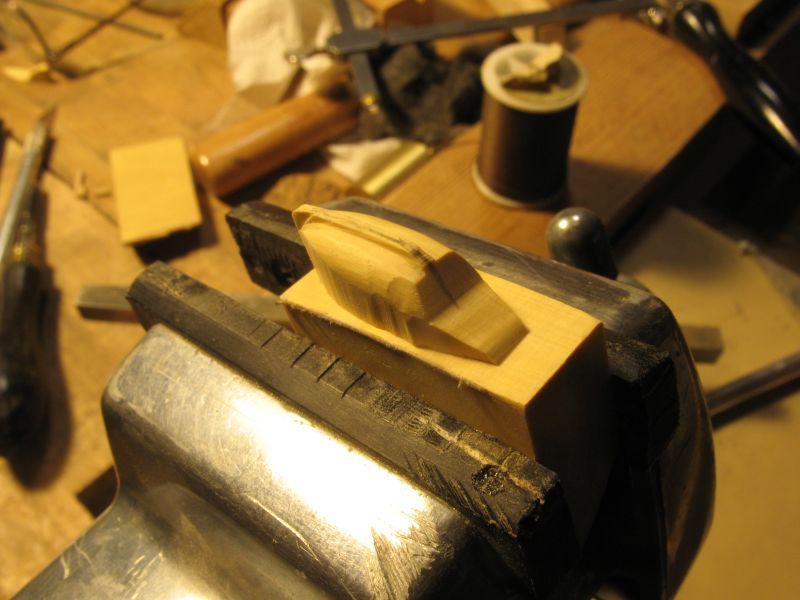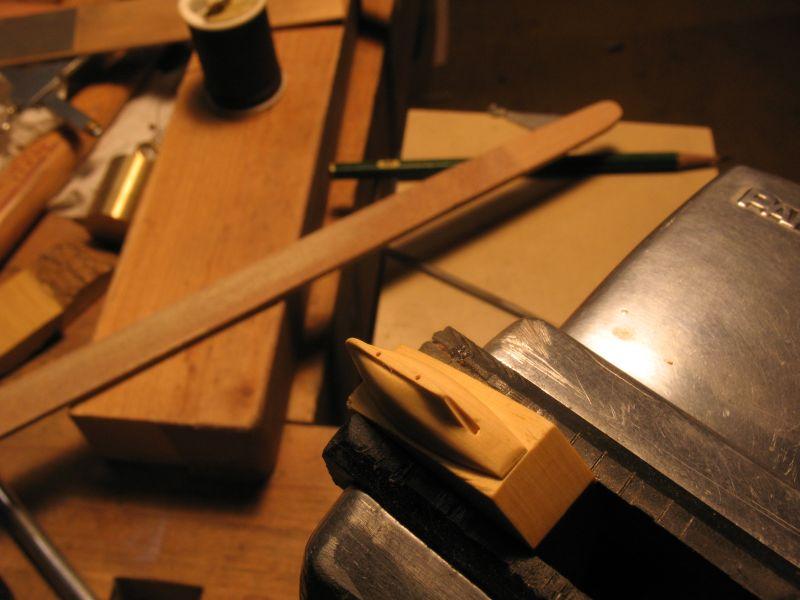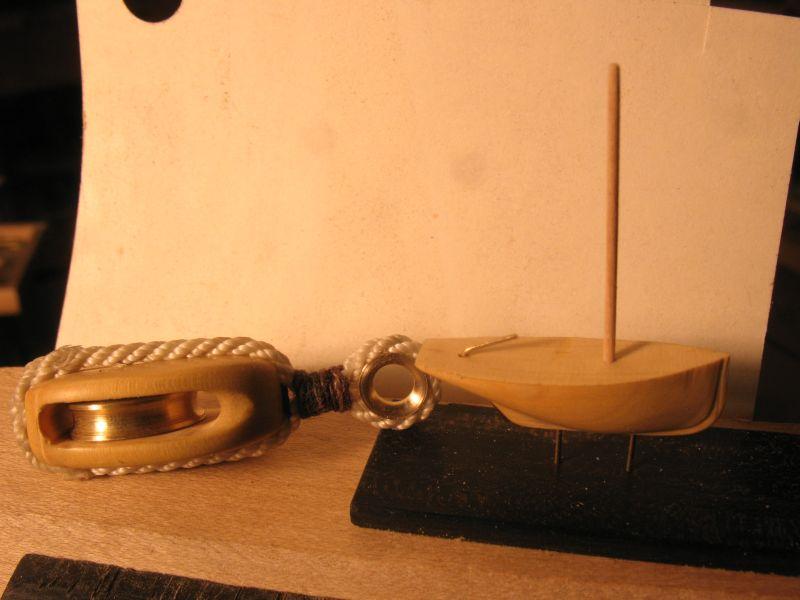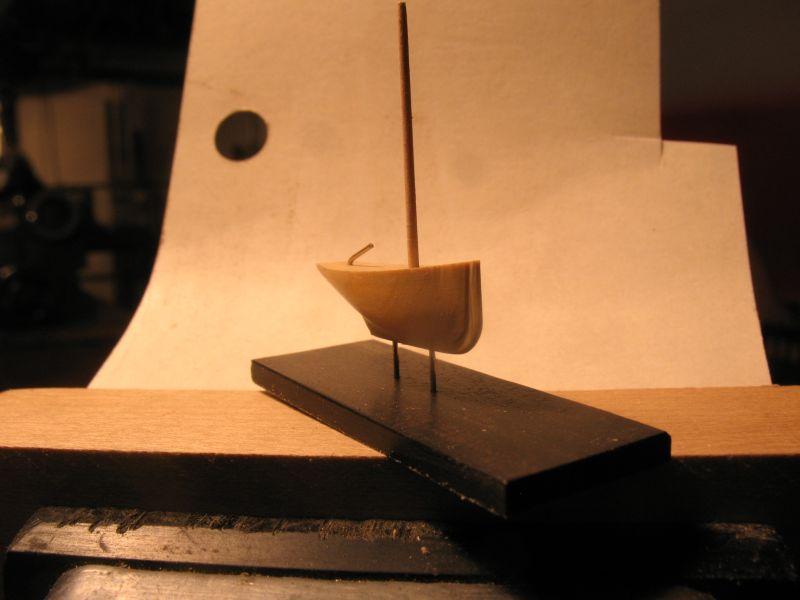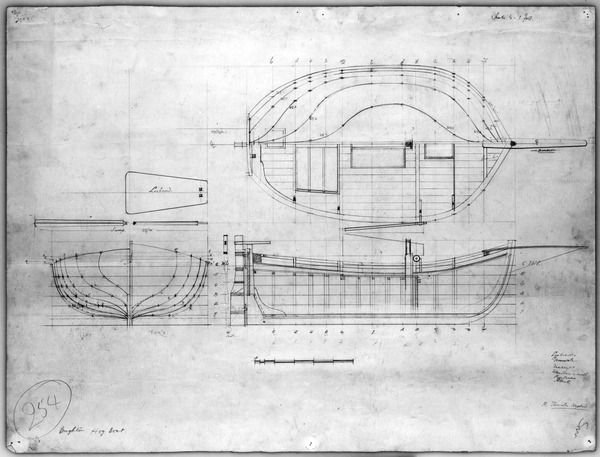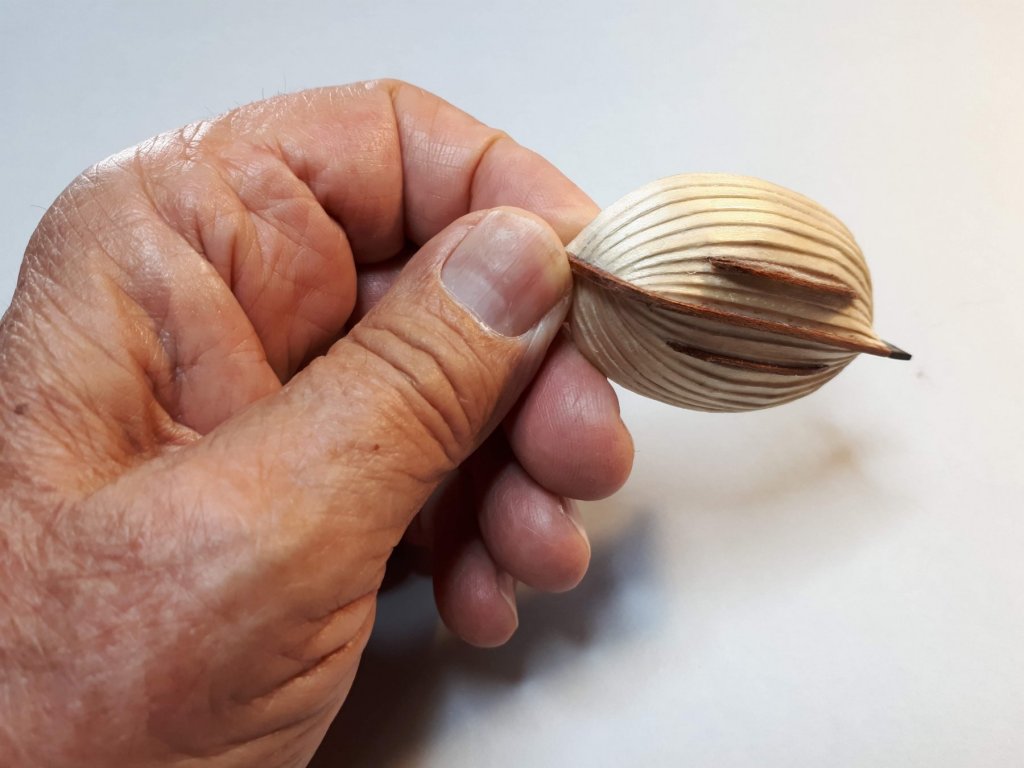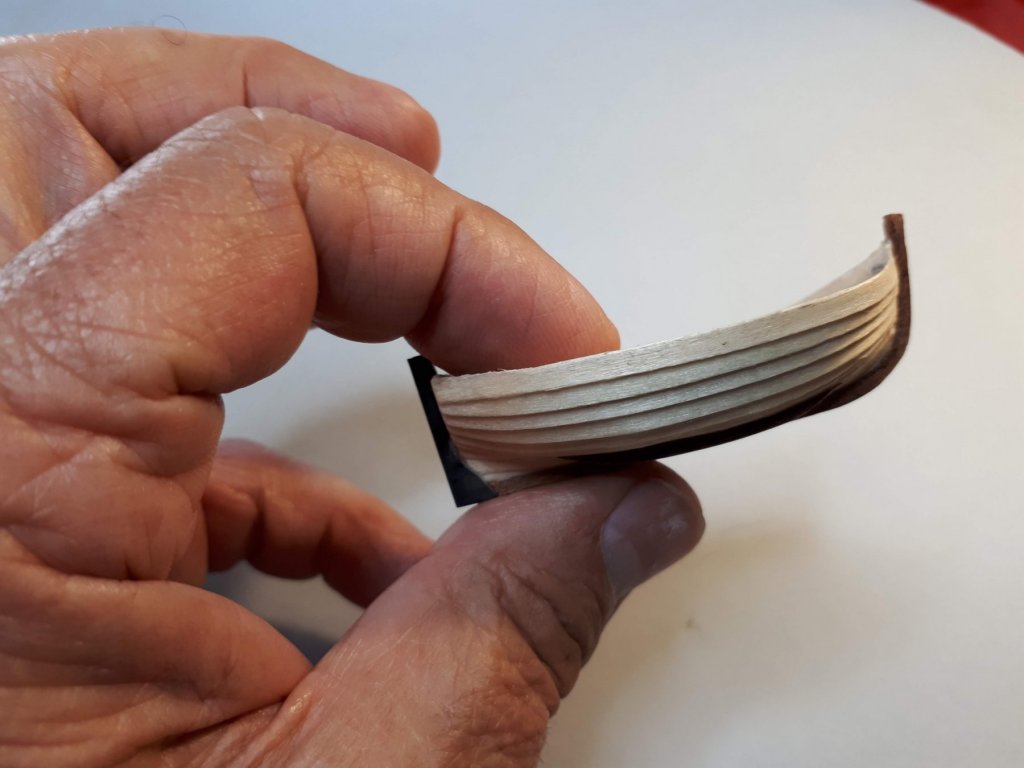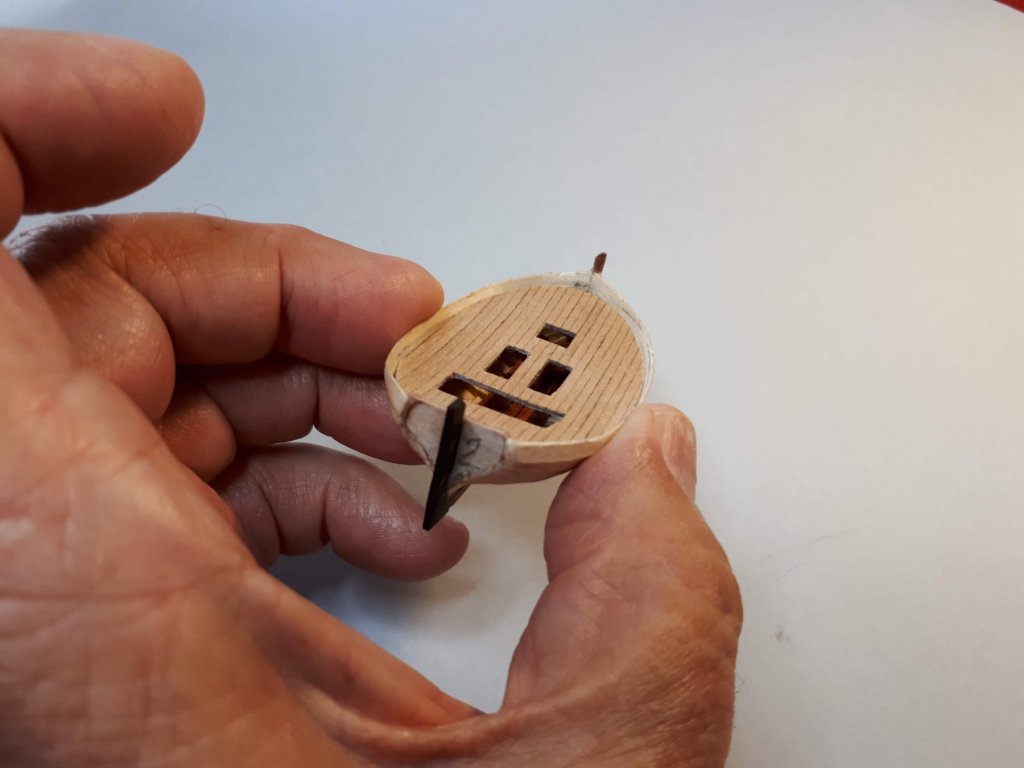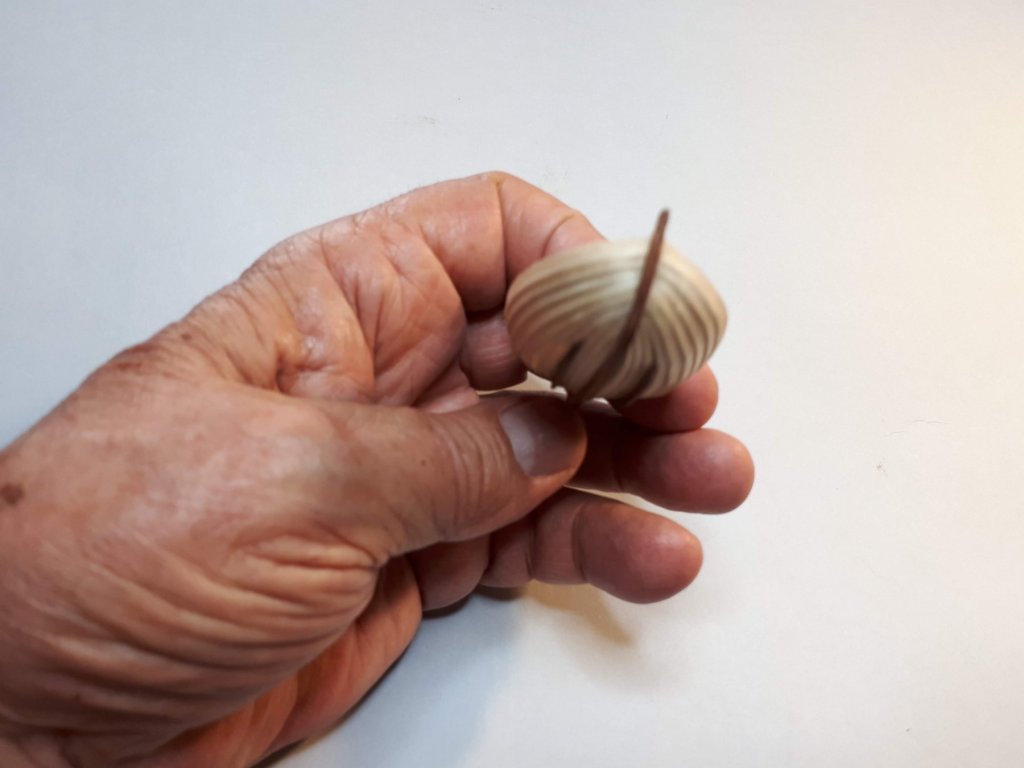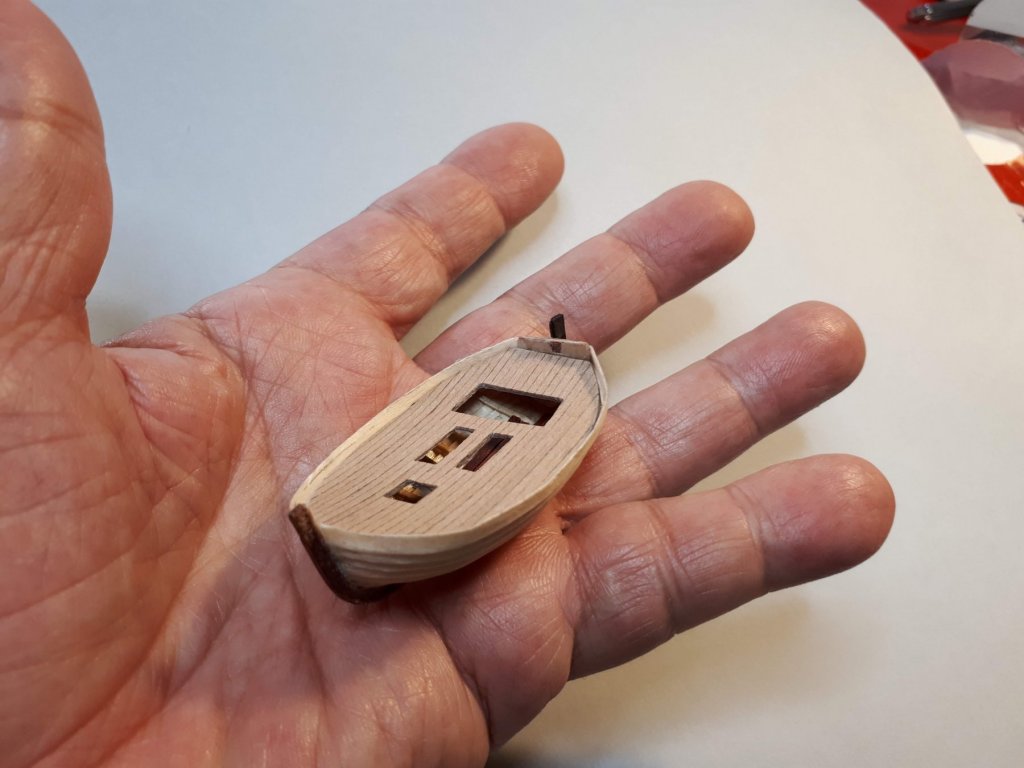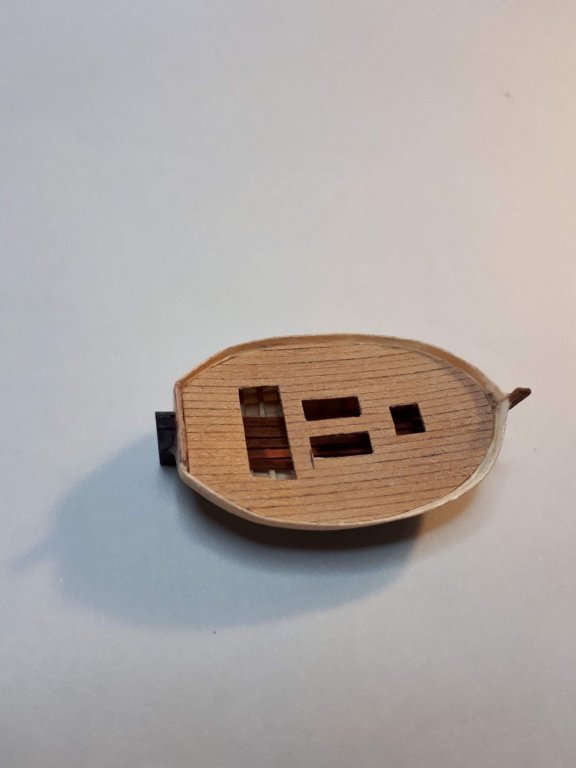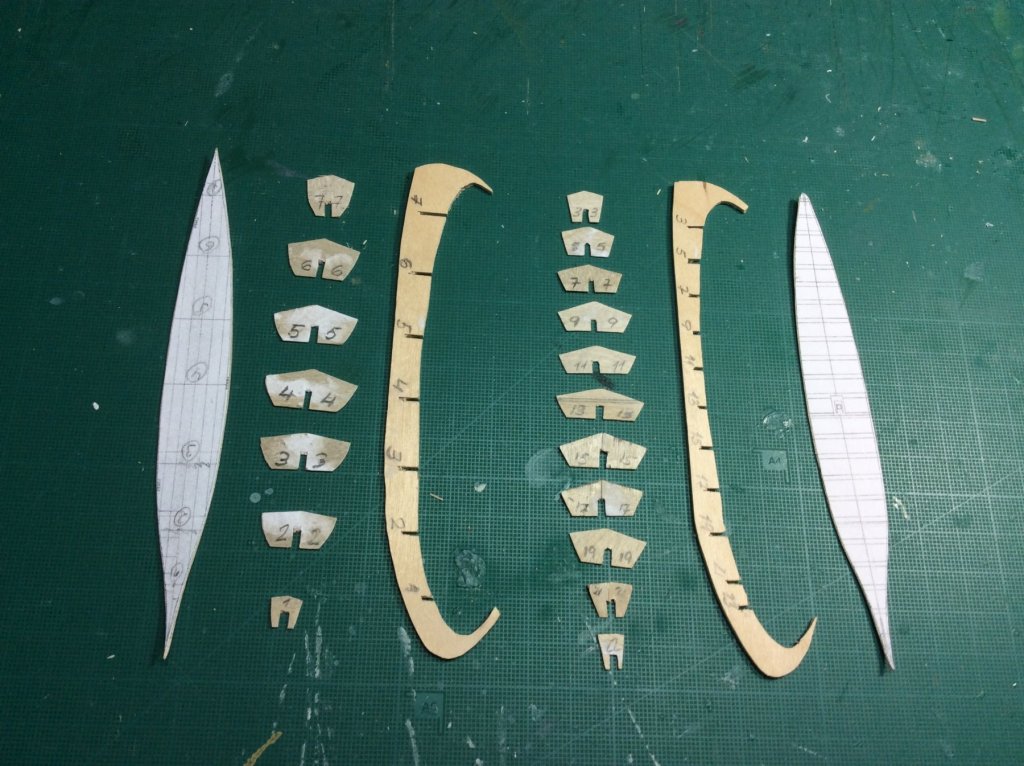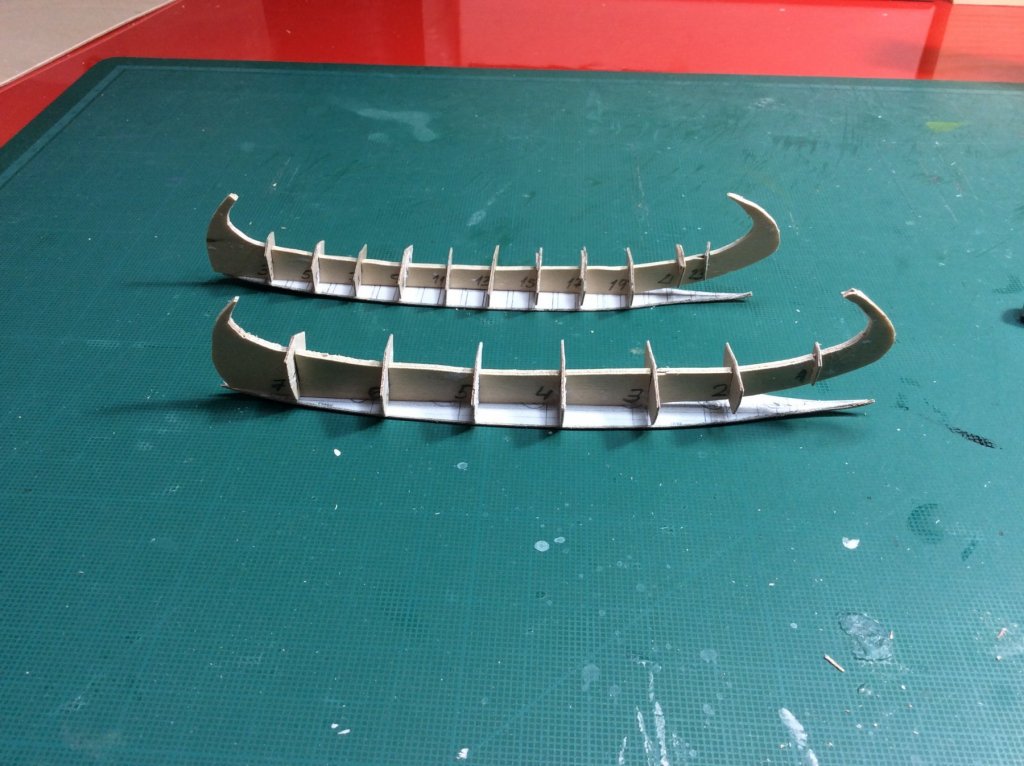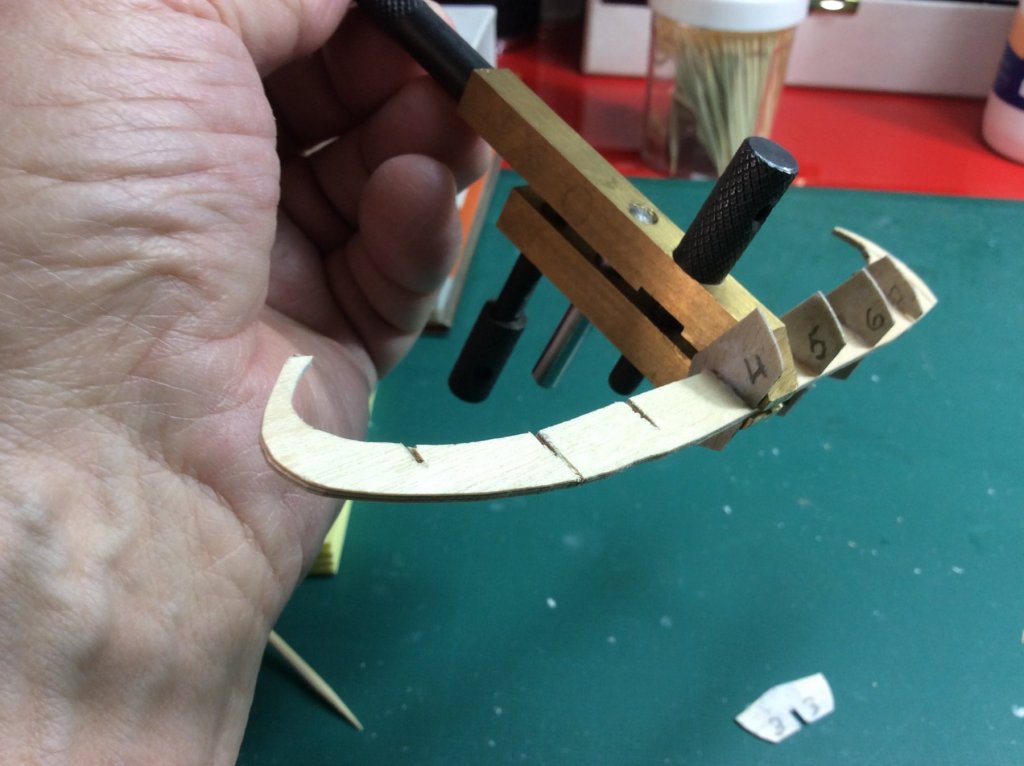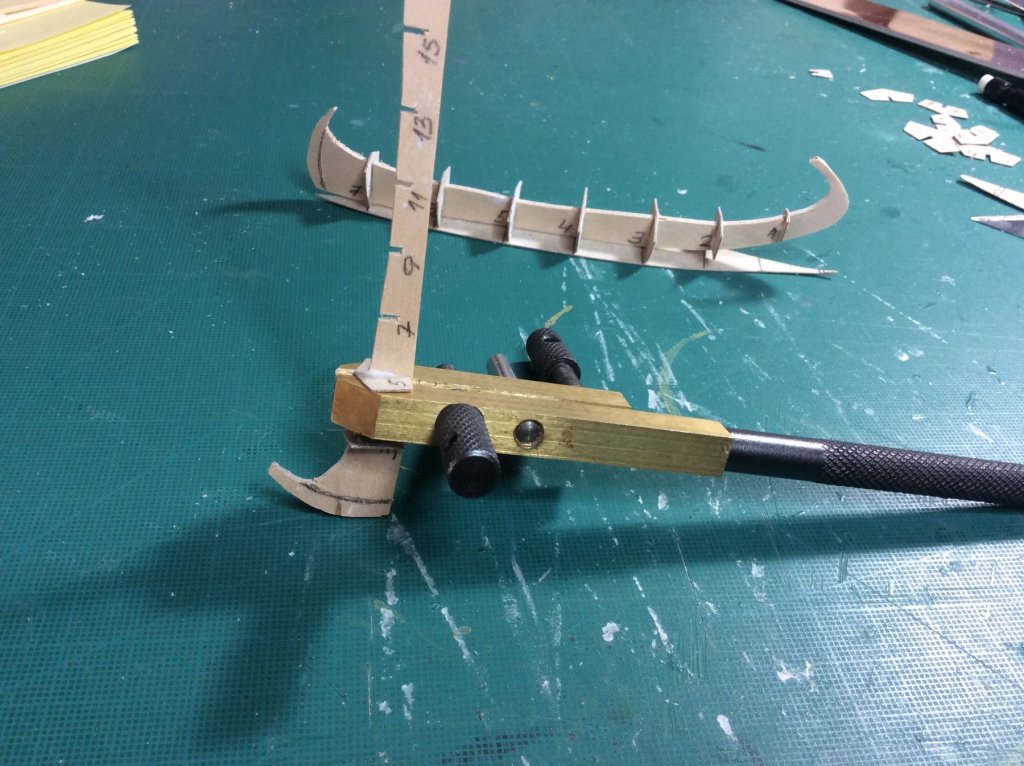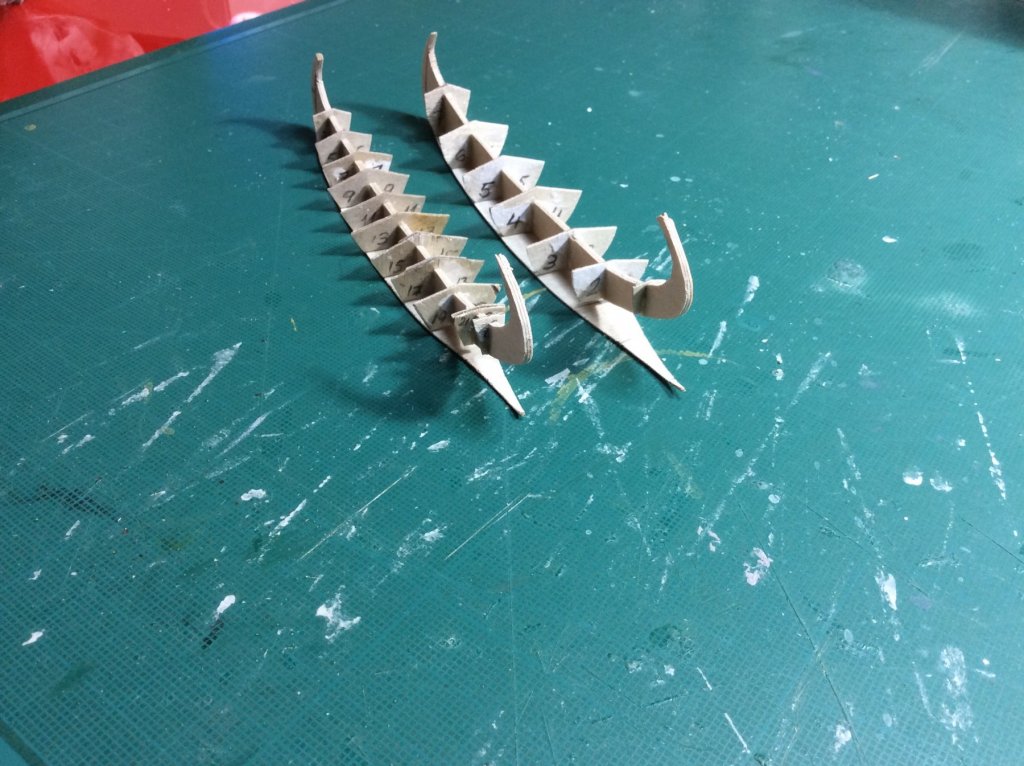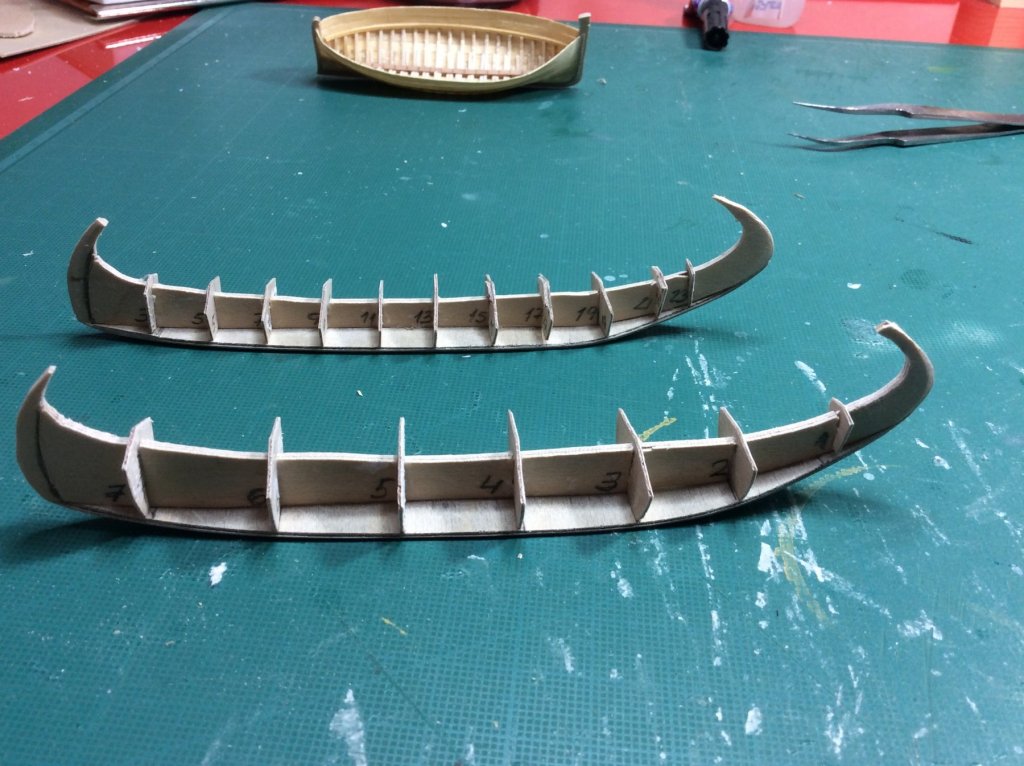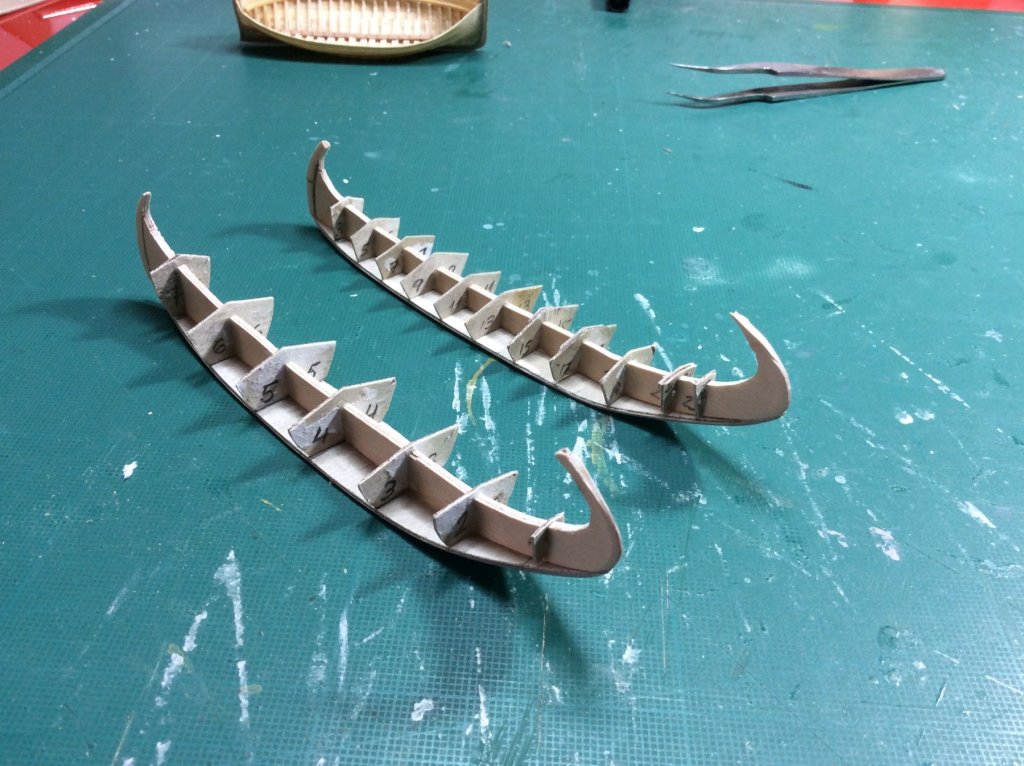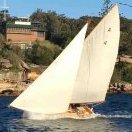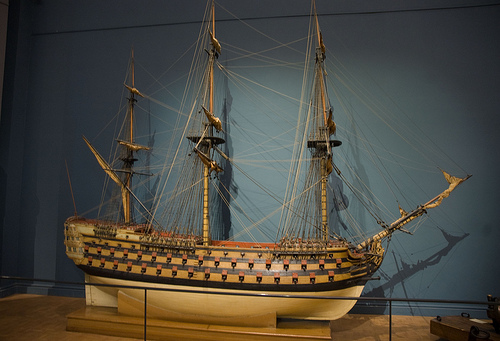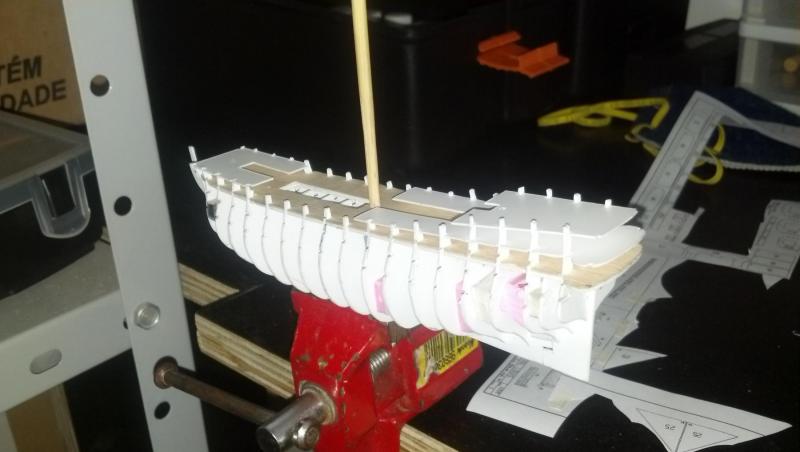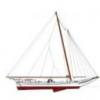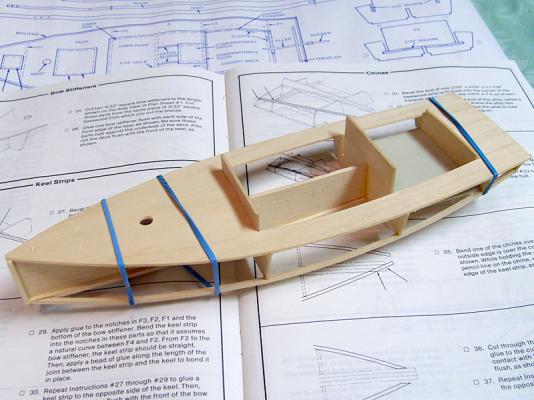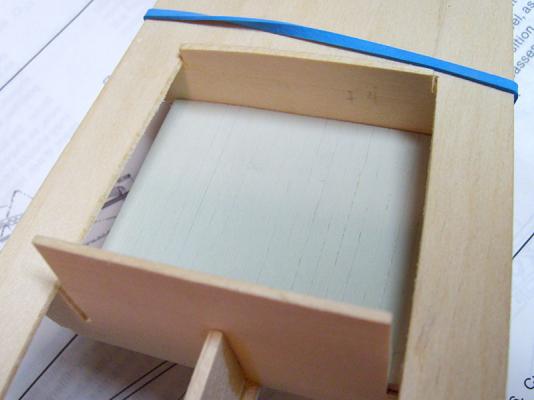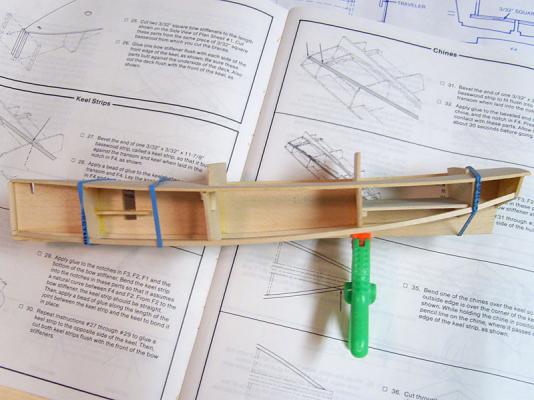Search the Community
Showing results for tags 'small'.
-
Hi! I'm just getting into the world of model shipbuilding and decided to try my hand at a waterline solid hull yacht before I dive too deep. This hull design spoke to me for some reason. I've got several basswood pieces that I'm going to laminate for the hull and then start carving. One question I have, should i just print out several copies of the hull plan to make templates from? Or should i try to redraw the curves in solidworks first?
-
Hi everyone My miniature version of Pandora (using Anatomy of the Ship plans) was started about 5 years ago, but to this day, remains semi-completed. The reason for not completing it was ...yep...you guessed it...I got scared of doing the masting and rigging! This, in spite of building the Victory as well as Bounty and Lennox, all of which were three masted ships with extensive rigging! You'd think I wouldn't have any problems and would be eager to rig this model, but, to no avail. One day I will finish her...I promise. In the meantime, I'll update the build log with more instalments over the next few days. Hope you enjoy the first lot of pictures. Cheers Patrick
-
I thought that a challenge to build a small model at 1:500 scale similar to the ships in bottles might make a satisfying change from working in 1:8 scale the hull is carved from a small piece of the English Boxwood I decided to use the larger part of the block as a holding jig so I carefully fretted out the profile and plan with a jewelers saw, by not completing the cuts I was able to hold it easily until the end. The hull blank was reatached to the cut along the deck line saw cut with a little acc glue. The beginning carving most of the actual carving was done with the #11 blade then some files. Some .024" holes were drilled for mounting to a board and a similar hole was drilled for the rudder. The first trial assembly to get an Idea of how it will look. I think that the mast is a bit big in diameter yet and the hull still needs a bit of fairing in a couple of spots. Three quarter from the bow Still a fair ways to go but I am satisfied with the progress this evening. The brass tiller is just a placeholder it is a bit on the big side. Next the bowsprit and topmast gaff and boom. Michael
-
The hoggie or hog-boat of Brighton was a fishing boat of about 9 m. of length that had a breadth of about 5 m., a tiny transom and very full shapes with a nearly flat bottom, which allowed it to cross the breaking water and float in the beach like a duck. It was equipped with a deck, had an leeboard to counteract the excess drift produced by its peculiar forms and armed two masts with spritsail rigging. The true hoggies disappeared around 1880, although other Brighton boats, which are actually luggers made in Hastings or in Rye, continue to be known as hoggies.
- 11 replies
-
- small
- brigthton hog
-
(and 1 more)
Tagged with:
-
The moliceiro, from the Ría de Aveiro, was born as a working boat destined for the collection of the “moliço”, lagoon aquatic vegetation that was used for the transformation of the sandy banks in the lands of labor, providing them with a substrate that favored the retention of water and fertilized them together with other organic materials. Being originally a work boat, striking unusual decoration, colorful and full of color, in which, framed by polychrome wreaths and geometric designs, highlight the four panels located in the noble areas of the boat, a bow and stern and port and starboard. These panels appear decorated with paintings often naive and naïve, full of expressiveness, topped off at the bottom by a legend that if sometimes it is a malicious point and borders on the vulgarity, other Although normally the moliceiro only wobbles a stick, sometimes, with loose winds, it is armed with two, to endow it with a “traquete”, small front sail that is rigged in a mast of smaller size (“mastaréu”) nailed in a square holen that is practice in the cavern adjacent to the bulkhead of the deck. This second moliceiro of my collection, which I have made simultaneously with the other moliceiro, starts from different planes: the first is made from the ones that appear in the book of Senos da Fonseca entitled “Embarcações que tiveram berço na laguna”, and this second It is made from the plans of the Museu de Marinha de Liboa. Both are made to the same scale (1: 110), and there are some differences between them, which I think is perfectly logical and admissible in boats whose bill is basically handmade. Perhaps the most striking of these differences is the higher height of the moliceiro board of Senos da Fonseca, which also has a certain curvature in a vertical sense that is not found in the moliceiro of the Museu de Marinha. I am thinking about leaving one of them planted in the usual way with just one mast and sail, and doing the other with two masts, giving it a “traquete”, small front sail that is rigged in a smaller mast (“mastaréu”) nestled in a square inkwell that is practiced in the “cavern” adjacent to the forward deck bulkhead The first thing I do is cut out the false frames, which I previously pasted on a Finnish birch plywood of 0.6 mm. (very simple cut, since I do it with scissors: it's like cutting cardboard). A first difference between the two moliceiros is the number of false frames that I am going to use; in the Marinha Museum come the profiles of the 23 frames that make it up (I'm going to use only half of them for my false frames), while in the plane of Senos da Fonseca only profiles appear of seven sections and I will use all of them. Checking its correct alignment, I'm sticking the false frames on the longitudinal profile of the boat, which I have cut, this time, with a blade, on a 1.5 mm plywood. (this greater thickness helps to avoid deformations and warping in the sticking phase of the strands) Once the "skeletons" are assembled, I proceed to stick the floor of the boat. To reinforce it, I do it with two cut plates of 0.6 mm. hitting first one and then another superimposed. And now, let it dry well before starting the gluing of the strands.
- 13 replies
-
- small
- moliceiros
-
(and 1 more)
Tagged with:
-
Hi all I'm building a 1:12 yacht model, the actual boat would be 28 foot hull (around 9m) & a 20th century yacht - so the shrouds would be wire perhaps 8 to 10mm diameter actual (or 0.65 to 0.8 or 1mm diameter to scale). The actual rigging would be stainless steel, so it would be nice for it to look like that. It needs to be straight when tensioned a bit, it won't look any good with kinks. Also, I think that some texture is preferable, to replicate the texture of the SS wire, but I'm open to solid... I'm be grateful for any suggestions, thanks Mark
-
Before anything, English is not my mother language so please be kind to my mistakes (there will be too many I'm afraid) and lack of nautical jargon. Well, this is my first build. You may think it's a pretty bold move for a beginner to model such an intricate ship as the Royal Louis but I fell in love at first sight with the model at the Musée National de la Marine in Paris a couple years ago. At the time, I had no interest whatsoever in ship modeling, which is a pity, and missed the opportunity of taking hundreds of pictures at the museum. Either way, that's the one... The model at the museum is huge - I think it's larger than 2.5 meters (8.2 feet?). I wanted to build a model ship like everyone in the forum but I live in a small appartment in Sao Paulo Brazil so I had to settle for something smaller. I also didn't want to buy a kit (another risky choice for a rookie) so I got both model ship makers and historical plans to plan my build. In the end, I planned my little Royal Louis to have a 25 cm hull (9.8 inches?) and sit comfortably on a very small shelf when done. Another reason for the small size is that I don't have much time so, a larger model would take too much time preparing the wood, etc etc. I'm no Lloyd Mccafery so my model will be full of flaws and probably horrible in the end, but I guess it's a nice experience and you can only learn stuff by doing it. I really hope I can learn something from it. Lots of stuff will be out of scale or I'll end up using inadequate materials/techniques, but in the end I'll have fun. I used POB as a start as you can see in the next pic... The bulkheads are really thin, so wood was not an option (at least for my poor skills). I tried with a couples different types of wood but all of them felt too brittle to my taste, so the internal false keel / bulkheads were all made of styrene. They do have some flexibility but at least I didn't break all of the bulkheads. So far, so good.
- 76 replies
-
- royal louis
- ship of the line
-
(and 1 more)
Tagged with:
-
Back before anyone knew what a bucket list was, one of the boats on my bucket list was an Edwardian_launch Since I had not been able to find drawings of a launch I liked, I decided to design my own. So out came the books and a few hours (days) later I have what I think will be a nice hull. The cabin and seating will come later. As I was cutting out the bulkheads for the hull I happened to notice the 1:200 scale bulkheads for the Pequot that I had just finished. They were what I started with before I changed to 1:100 scale. As it turns out they are very similar to the 1:48 scale launch parts I had just cut. My design has a clipper bow and the Pequot has a blunt bow but . . . So I’ve decided to build two at the same time. Something I’ve ever done before. I expect to have fun finishing the design on both as I build. As Popeye says “it’s in my head” . Bob
-
Hi. I found this while looking into designs and methods of thickness sanding. http://www.micromark.com/microlux-drum-thickness-sander,8599.html I know it's not up to Jim's standards but... Has anyone used one ? The design look's good. Bolted down to a bench for sure. Any comments... Regards Antony.
-
I started this build log a little more than a year ago; unfortunately it was lost in the great crash. I wasn’t too far along when life intervened to take up my time on this little boat. I’ll post the older photos and then move along from there. More photos in the next couple of days. Thanks for looking!
- 7 replies
-
- small
- chesapeake bay flattie
-
(and 1 more)
Tagged with:
-
Hello, I am finishing up the Royal yacht Mary by Mamoli, and working on the masts and spars. They are from basswood, all warped and break easily when you sand them thin. I did some research in the books I have and a website from Gene Larson, on what type of wood to use for mast and spars. They suggest the following: Sitka spruce, beech, lemon wood, lance wood, maple, cherry and red cedar. No basswood, the research says it is soft and warps. I need the following dowel diameters and I have put them both in mm and inches. 8mm or 5/16" 7mm or 17/64" 6mm or 15/64" 5mm or 3/16" 4mm or 5/32" 3mm or 1/8" 2mm or 5/64" In my area I checked these stores for ready made dowels: Home Depot, Lowes, Michael's, hobby lobby and AC Moore and my local hobby stores - they all have basswood and do not have the odd sizes. I checked on line and these don't have the odd sizes too. http://www.nationalbalsa.com/ http://dlumberyard.com/index.html http://www.hobbymillusa.com/ http://www.modelexpo-online.com/default.asp (they used to have so much more) http://www.woodcraft.com/ www.historicships.com Does have the odd sizes but all of the wood is pricey. Conclusion: I can go to 3 stores on-line and buy here and there and pay a lot for shipping OR have one (1) store that provides Everything. Any suggestion of other places I missed that are reliable in the USA. The NET has lots of places that sell dowels and Amazon is connected to many sites I have never heard off. I need dowels that are not basswood. Any suggestions is much appreciated. Marc
-
I recently purchased a couple Midwest Products small boats to build until i'm more in the mood to build more on my tall ships. I bought the Muscongus Bay Lobster Smack and the Main Peapod and just finished the peapod. I mainly bought the Peapod to better acquaint myself with hull planking and it turned out pretty nice. I still need to build the lobster trap in the instructions but saving that for later and still deciding on a paint scheme. I posted a build progress video on youtube at http://www.youtube.com/watch?v=PZqn-OxwAxM and adding some pictures here also...I hope you like it.
- 7 replies
-
- small
- midwest products
-
(and 2 more)
Tagged with:
About us
Modelshipworld - Advancing Ship Modeling through Research
SSL Secured
Your security is important for us so this Website is SSL-Secured
NRG Mailing Address
Nautical Research Guild
237 South Lincoln Street
Westmont IL, 60559-1917
Model Ship World ® and the MSW logo are Registered Trademarks, and belong to the Nautical Research Guild (United States Patent and Trademark Office: No. 6,929,264 & No. 6,929,274, registered Dec. 20, 2022)
Helpful Links
About the NRG
If you enjoy building ship models that are historically accurate as well as beautiful, then The Nautical Research Guild (NRG) is just right for you.
The Guild is a non-profit educational organization whose mission is to “Advance Ship Modeling Through Research”. We provide support to our members in their efforts to raise the quality of their model ships.
The Nautical Research Guild has published our world-renowned quarterly magazine, The Nautical Research Journal, since 1955. The pages of the Journal are full of articles by accomplished ship modelers who show you how they create those exquisite details on their models, and by maritime historians who show you the correct details to build. The Journal is available in both print and digital editions. Go to the NRG web site (www.thenrg.org) to download a complimentary digital copy of the Journal. The NRG also publishes plan sets, books and compilations of back issues of the Journal and the former Ships in Scale and Model Ship Builder magazines.

